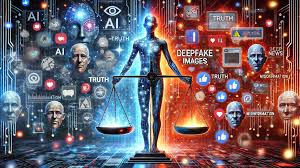
“Empowering Truth: How AI is Transforming Human Rights Journalism for a Brighter Tomorrow 2025”

In an age defined by digital transformation, artificial intelligence (AI) is emerging not just as a tool but as a partner in shaping the way stories are told, especially in the high-stakes world of human rights journalism. From war zones to refugee camps, from the halls of power to grassroots movements, journalists are tasked with unearthing the truth, amplifying voices, and holding those in power accountable.
Joblandscape
With growing threats to press freedom, rising misinformation, and the sheer scale of global crises, AI offers a powerful promise: to enhance the reach, accuracy, and impact of journalism while upholding its core values — truth, justice, and humanity.
The Growing Need for Innovation in Human Rights Reporting

Human rights journalism often requires operating under dangerous, restrictive, or resource-scarce environments. Investigating war crimes, exposing systemic abuse, or documenting state violence can put journalists at great risk. Meanwhile, information is often buried under layers of propaganda, disinformation, or data noise.
This is where AI steps in.
AI can scan massive amounts of data in moments, detect patterns invisible to the human eye, and translate languages or dialects in real-time. When used ethically and responsibly, AI becomes a force multiplier for journalists — offering new ways to uncover the truth, verify facts, and protect both reporters and their sources.
Detecting Abuses Faster and More Accurately

AI-powered tools are already being used to monitor social media, satellite imagery, and open-source intelligence (OSINT) to detect potential human rights violations. For instance, organizations like Amnesty International and Human Rights Watch are using machine learning algorithms to analyze satellite images and identify signs of mass graves, destroyed villages, or troop movements — sometimes before human analysts even spot them.
By quickly processing images, texts, and video from multiple sources, AI can help flag abuses in real-time, giving journalists a head start on critical stories. This allows for more proactive reporting, shifting the paradigm from reactive coverage to preventive storytelling — a crucial change in regions where violence escalates rapidly.
Fact-checking in the Age of Misinformation

With misinformation and deepfakes becoming more sophisticated, maintaining credibility is a growing challenge. AI tools like natural language processing (NLP) and deep learning can be used to automate fact-checking, detect manipulated content, and track the origin of misleading information.
By equipping newsrooms with AI-driven verification systems, journalists are better equipped to debunk false narratives and protect the integrity of their work. This is especially important in human rights reporting, where false information can lead to public mistrust, hinder international response, or put lives at risk.
Amplifying Voices That Matter

AI also plays a key role in amplifying marginalized voices. Translation tools powered by AI help break down language barriers, making stories from remote or underreported regions accessible to global audiences. Sentiment analysis and audience engagement tools allow media outlets to better understand public responses and tailor stories that resonate more deeply — all while keeping the human at the center of the storytelling process.
Moreover, voice recognition software can assist in transcribing interviews quickly and accurately, even from low-quality recordings in challenging environments. This allows journalists to focus more on the story and less on manual labor, improving both efficiency and storytelling depth.
Ethical Challenges and the Human Element

Despite its vast potential, AI is not a magic bullet. Concerns about algorithmic bias, data privacy, surveillance, and misuse of technology remain very real. AI systems are only as ethical as the people and policies behind them. For journalists, the challenge lies in ensuring that AI augments human judgment rather than replacing it.
Maintaining empathy, context, and cultural sensitivity — traits central to human rights journalism — cannot be outsourced to machines. Journalists must, therefore, play an active role in guiding the development of AI tools that align with ethical journalism standards.
A Collaborative Future

The future of human rights journalism lies not in man vs. machine, but in man and machine working together. Newsrooms, tech developers, NGOs, and academic institutions must collaborate to build AI tools that are not only powerful, but transparent, accountable, and inclusive.
Initiatives like the AI and Media Integrity program by UNESCO and the Partnership on AI are already paving the way for responsible innovation. As we move forward, it is crucial to ensure that journalists have both the training and the tools to use AI effectively and ethically.
Conclusion: Truth Empowered
AI is not just changing how stories are reported — it’s changing what stories get told and who gets to tell them. In the realm of human rights, this matters more than ever. While the challenges ahead are real, the opportunities are profound.
By embracing AI thoughtfully, journalists can do what they’ve always done — shine a light in dark places, give voice to the voiceless, and protect the truth — only now, with greater precision, reach, and resilience.






